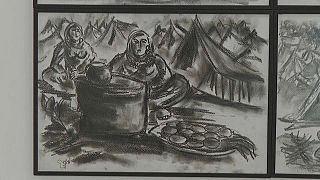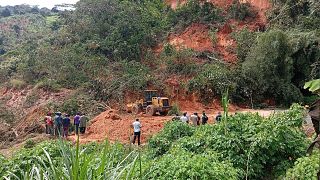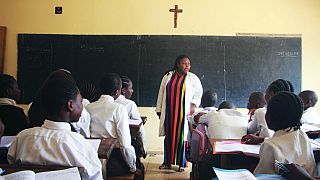Cameroon
A thirty-year-old female refugee from the Central African Republic, Hawaou Hamadou makes a meal of stiff porridge on a clay stove fuelled by small briquettes.
It’s a change from the open wood fire she was used to and easier than spending hours searching for wood far from the refugee camp where she lives in Mbile, eastern Cameroon.
“When you go out to find firewood, you walk far, it takes many hours, and you have to carry the wood on your head when going back.When you return back, you are tired. With briquettes we do not use as much effort, it is clean and we do not get dirty when cooking,” she said.
She has been in the camp for three years. Mbile’s population of 5,000 swelled to nearly 16,500 between 2012 and 2014, as thousands of refugees fleeing violence in the C.A.R found shelter in the village.
Using energy saving stoves that use briquettes made from saw dust and other waste is also helping to ease tensions between refugees and locals over increasingly scarce wood in the area.
The briquettes are made of clay, and sawdust from a local saw mill.
Nearly 70 percent of Mbile’s population no longer searches for wood in the bush.
“I thank the project, I am satisfied now. Before, when we went to the bush, there were fights between local residents and the refugees when we found the refugees in the fields. Today, there are no fights. You go to the field, you come back and find briquettes at home. No more going into the bush to look for wood,” said Mariam Mohamed a resident of Mbile.
According to Rodrigue Djakou, who runs the project in Mbile for the German development agency, GIZ, surveys carried out after the implementation of the project show that almost 70 percent of the Mbile population is no longer searching for wood in the bush.
“Using sawdust briquettes helps save about 16 tons of dried wood per day around Mbile. One year after, it is about 6,000 tons of dry wood that are preserved around Mbile, because they are not cut down,” he added.
According to the Cameroon’s Ministry of Forests, about one hectare of forest is cut down per person per year to supply enough wood or charcoal to burn.
These numbers could be higher, the most recent national data on the use of wood as firewood or charcoal is more than five years old.












02:19
Taste of Azerbaijan: Rich flavours, heritage await COP29 visitors
01:57
CAR: MINUSCA head stresses “importance of” renewing stabilization mission’s mandate
Go to video
Contaminated corn linked to deaths of 400 dogs in Zambia
01:42
MINUSCA's mission: strengthening State authority in Central Africa
00:51
Central African Republic and Kenya confirm outbreaks of mpox
01:33
UN mission provides support ahead of CAR's planned local elections